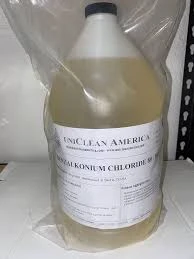Flocculant vs Coagulant
Understanding Flocculants vs. Coagulants Key Differences and Applications
In the realm of water treatment and purification, the terms 'flocculant' and 'coagulant' are often used interchangeably. However, they refer to two distinct processes and chemical agents that play crucial roles in the removal of suspended particles from liquids. Understanding the differences between these two terms is essential for optimizing water treatment processes.
Coagulants The Initial Step
Coagulants are chemicals that promote the aggregation of particles in a suspension. They work by neutralizing the electrical charges that keep particles suspended in water, allowing them to clump together. Common coagulants include aluminum sulfate (alum), ferric chloride, and polymeric coagulants. The coagulation process generally involves the addition of these chemicals to water, followed by rapid mixing to ensure even distribution.
During coagulation, small particles form larger aggregates, known as flocs. This process effectively reduces the turbidity of water, making it a crucial first step in water treatment. Coagulation is often followed by sedimentation, where the heavier flocs settle at the bottom of a tank, allowing for clearer water to be decanted off the top.
Flocculants Enhancing Particle Removal
flocculant vs coagulant

Flocculants, on the other hand, are used after coagulation to enhance the formation and growth of flocs. These are generally long-chain polymers that create bridges between flocs, helping them to grow larger and settle more quickly. Typical flocculants include polyacrylamide and natural polymers like starch.
The role of flocculants is particularly important when treating water with very fine particulates or colloids that are difficult to remove through sedimentation alone. By increasing the size of the flocs, flocculants facilitate a faster and more efficient settling process, significantly improving the clarity of the treated water.
Applications in Water Treatment
Both coagulants and flocculants are widely used in various applications, including drinking water treatment, wastewater management, and industrial processes. In municipal water treatment facilities, the combination of both agents ensures that a wide range of contaminants is effectively removed, resulting in potable water that meets safety standards.
In summary, while coagulants initiate the process of particle aggregation by neutralizing charges, flocculants enhance and optimize the settling of these aggregates. Understanding the unique roles of each can lead to more effective and efficient water treatment solutions, benefiting both human health and the environment.
-
Water Treatment with Flocculant Water TreatmentNewsJun.12,2025
-
Polymaleic AnhydrideNewsJun.12,2025
-
Polyaspartic AcidNewsJun.12,2025
-
Enhance Industrial Processes with IsothiazolinonesNewsJun.12,2025
-
Enhance Industrial Processes with PBTCA SolutionsNewsJun.12,2025
-
Dodecyldimethylbenzylammonium Chloride SolutionsNewsJun.12,2025





